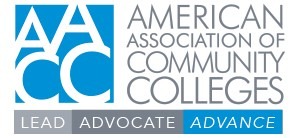Editor’s note: This weekly update from the government relations office at the American Association of Community Colleges (AACC) provides the latest on what’s happening in Washington and how AACC is advancing policies to support community colleges and students. Send questions, feedback and more to: opens in a new windowkgimborys@aacc.nche.educreate new email.
- opens in a new windowMore bad news on the FAFSA
- opens in a new windowSenate Appropriations Committee advances their Labor-H bill
- opens in a new windowDepartment of Education releases guidance on connecting students to means-tested benefits
- opens in a new windowNew Title IX regulations are now in effect
On Tuesday, the Department of Education (ED) released new Electronic Announcements (EA), updating colleges on continued challenges with corrections functionalities and the processing of paper FAFSAs. In the opens in a new windowfirst EA, ED announced that institutional batch corrections will not be available for the 2024-25 FAFSA after initially promising they would be available by mid-August. Instead, institutions will need to submit corrections on a student-by-student basis. This latest announcement is a major blow to financial aid offices and will mean a significant increase in burden for staff as colleges approach their payment deadlines.
School-initiated corrections are an essential part of the financial aid and aid packaging process. For many students, institutional corrections are required to address conflicting information, changes made in verification, and other items that prevent a student from receiving a Student Aid Index (SAI) and the college from being able to package and disburse their aid. In other cases, institutional corrections help ensure that a student’s SAI reflects any new or relevant circumstances that could impact a student’s ability to pay, including through dependency overrides and professional judgment. Instead of clicking a button to submit hundreds of these corrections at once, financial aid officers will now have to submit each correction manually. This will inevitably delay aid offers and cause enrollment complications for the most vulnerable students, through absolutely no fault of the college or financial aid offices. ED has said that they are focused on ensuring that the batch corrections functionality is in place for the 2025-26 award year.
In the opens in a new windowsecond EA, the Department announced that it will begin processing paper FAFSAs this week and expects to clear the backlog in two to three weeks. In another reversal, ED announced that corrections for paper FAFSAs will not be available mid-August, as initially announced, but will instead be made available by the end of September. The EA details new flexibilities for colleges in light of the continued delays.
Senate Appropriations Committee advances their Labor-H bill
On Thursday, the Senate Appropriations Committee reported out by a vote of 25-3 its Fiscal Year (FY 2025) Labor, HHS, and Education (Labor-H) bill. As the American Association of Community College’s (AACC) David Baime covers in the opens in a new windowCommunity College Daily, the Senate bill includes a $100 increase to the Pell Grant maximum, continued support for the Child Care Access Means Parents in School (CCAMPIS) program, and increased funding for student aid administration.
Department of Education releases guidance on connecting students to means-tested benefits
On Monday, ED released opens in a new windownew guidance on using students’ FAFSA data to connect them with means-tested benefits. A key part of the FAFSA Simplification Act, institutions and state grant agencies are now able to direct student outreach about means-tested benefits after assessing that a student may be eligible from their Pell Grant eligibility and Student Aid Index (SAI). These benefits include health coverage offered through the Affordable Care Act, the child tax credit, the earned income tax credit (EITC), Medicaid, public housing, SNAP, WIC, SSI, and TANF.
New Title IX regulations are now in effect
On Thursday, the Biden Administration’s new regulations around Title IX officially went into effect. However, due to a series of lawsuits, the Department has been enjoined from enforcing the regulations in 21 states and at opens in a new windowhundreds of individual institutionsopens PDF file . In some other states, state officials have instructed colleges not to comply. This has created an incredibly confusion situation for colleges across the country. AACC’s David Baime has more on the new regulations and their enforcement in the opens in a new windowCommunity College Daily.
Following an ED webinar featuring Secretary Miguel Cardona and Assistant Secretary for Civil Rights Catherine Lhamon, the Department released a series of resources for colleges, including an opens in a new windowoverview of the new regulationsopens PDF file , opens in a new window“pointers” for implementationopens PDF file , and a opens in a new windownew resource for drafting nondiscrimination policies and grievance proceduresopens PDF file .
